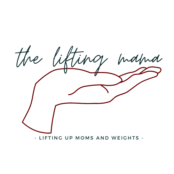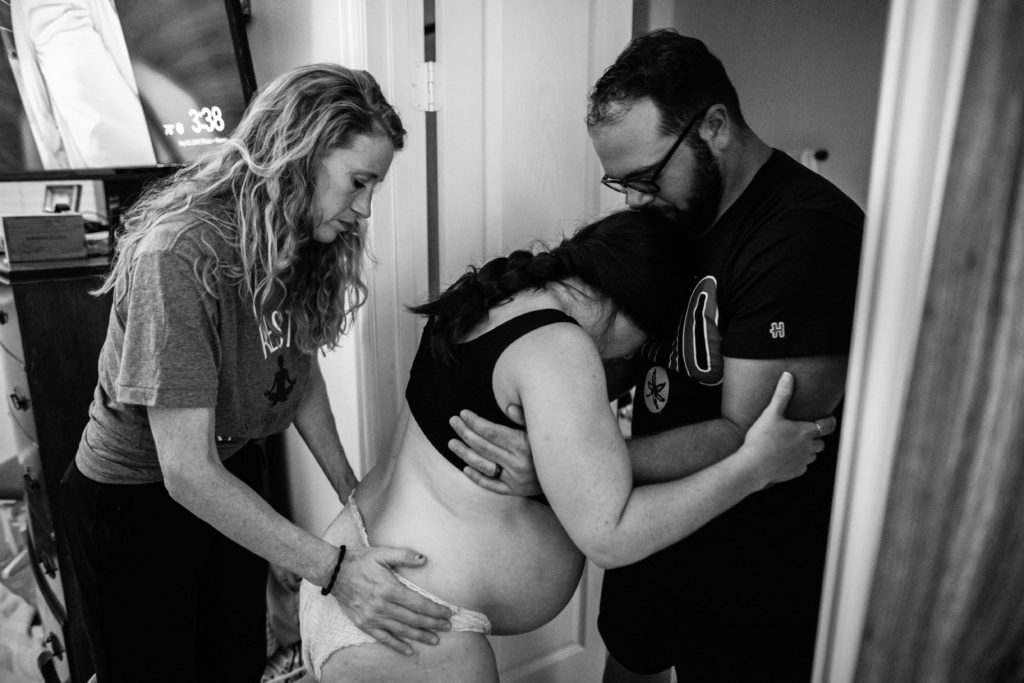One thing leads to another….and another, and another, and another.
Nothing happens in a silo, everything is interconnected, and the domino effect is real!
Birth is a natural process that, once disturbed, tends to spiral out of control with more disturbances. When we interfere with the delicate balance of hormones, poke and prod mama and baby, and attempt to control the uncontrollable, outcomes are more often than not suboptimal.
What is the cascade?
In the birth world, the cascade of interventions is the concept that using one intervention can lead to the use of more interventions. In some cases, it can even create the NEED to use more interventions. The cascade is well documented both in research/statistics, and anecdotes of mamas who have experienced its impact.
For a quick example, the choice to induce increases the chances of getting an epidural which increases the chance of birth ending in a c-section. Each intervention increases the chances of the next intervention happening.
The cascade of interventions generally refers to labor itself, though I would argue that routine procedures and protocol experienced from the very first prenatal appointment should be included (more on that in a little bit!).
While the cascade can certainly happen in all birth spaces, this discussion will focus mainly on how it plays out in the hospital setting.
How does it begin, and what does it look like?
There are quite a few ways to see this process begin, but more than likely, we see it start at a late pregnancy ultrasound or a prenatal appointment with a membrane sweep.
An ultrasound may be offered in late pregnancy to check fluid levels, check on baby’s growth, or check on the placenta’s aging. Though ultrasounds (especially in late pregnancy) can be wildly inaccurate, the results – “baby is too big!” “baby is too small!” “there’s too much fluid!” “there’s not enough fluid!” “your placenta is showing signs of aging!” – can be used to encourage mama to induce labor.
Intervention begets intervention.
A membrane sweep may then be offered as a “noninvasive” induction measure. In reality, the sweep may cause irritation, swelling, introduce bacteria that could cause infection, or cause contractions before baby is actually ready which can exhaust mama unnecessarily.
Are you ready? This will go quickly…buckle up!
If the sweep “fails,” mama may be offered another sweep. Another option on the table if the sweep doesn’t do the trick would be a medical induction.
A little pitocin to kick things off! Let’s make sure we get this continuous fetal monitor on you and run an IV….just in case! The pitocin causes extremely intense contractions, and mama is in a lot of pain and getting exhausted. Easy fix – let’s get an epidural so she can rest and have a break! Ah, much better, but wait…contractions are slowing down, mama isn’t dilating, and it seems like labor has stalled. Well, let’s just turn up the pit again! You just stay lying down, mama. No need to move. Wait!! Mama’s blood pressure is not right, and baby seems to be in distress. Thank goodness for these monitors. Let’s go, mama, your baby is struggling. Time for a c-section.
Whew, aren’t you glad we were here to save your baby? Healthy mom and healthy baby. That’s all we could ask for.
This is just one way – honestly, the most typical way – we can see the cascade play out. More often than not, the cascade in labor begins by having a lack of patience for nature to take its course.
Why Does it happen?
Physiological labor itself is a cascade. It’s a perfectly orchestrated release of hormones and a feedback look between baby, mama’s body, and mam’s brain.
Every intervention interrupts that natural feedback loop of labor. Each time it’s interrupted, there’s another intervention to try to help get things “back on track” when in reality, it breaks mama further from the natural cycle of birth.
These interruptions can have long-lasting impacts as well, the cascade extending beyond birth. Interrupting the flow of oxytocin can decrease bonding and breastfeeding success.
Can it be stopped?
Remember when I said it could be argued that the cascade really starts right at the very beginning of pregnancy in that first prenatal appointment? Truly the cascade starts with the very first interventions – choosing who will attend your birth and where that birth will take place.
Picking a birth team that is supportive of your birth desires and respects you as the authority and center of the birth is the best way to stop the cascade of interventions. Being very clear your entire pregnancy on your birth desires is also key. Having labor support like a doula can also help give space between a recommended intervention and the need for a decision.
Learning your Options
This is not to say interventions are never warranted. But as a routine matter of course, birth is not something that needs intervening. Baby will come when baby is meant to come.
Every intervention comes with its pros and cons. Take the epidural for example. It can provide great pain relief, and it can give an exhausted mama a break if labor is dragging on. But what comes with those pros are the cons of prolonging labor, limited mobility, continuous monitoring, fever, itchiness, sudden drops in blood pressure, a groggy baby after birth, and other cons. And each of those downsides can lead down a rabbit hole on its own of further interventions to remedy the problems caused by the first!
Building a birth plan is a great way to think through and learn all the options available during birth. You can learn the pros and cons of each intervention, game plan how you’ll handle situations that come up, and get on the same page with everyone who will be at the birth.
At this point in the US, 90% of moms end up with a medical intervention during labor, and a third of babies are born surgically. It doesn’t have to be like this.
Do the thinking ahead of time so when labor comes, you can turn off your brain and surrender to your body’s process rather than surrendering to an external chain of events.

